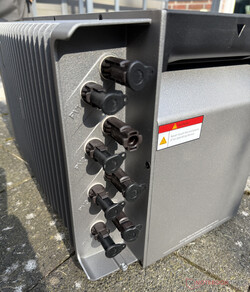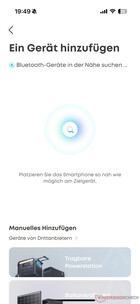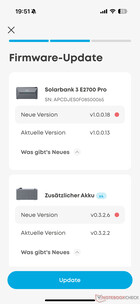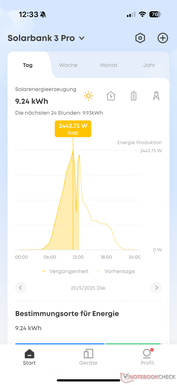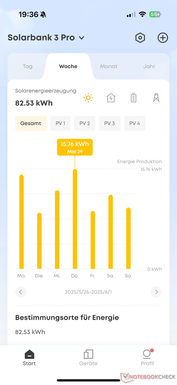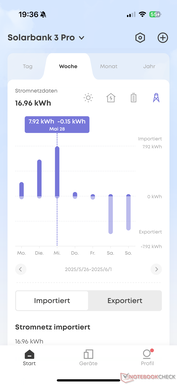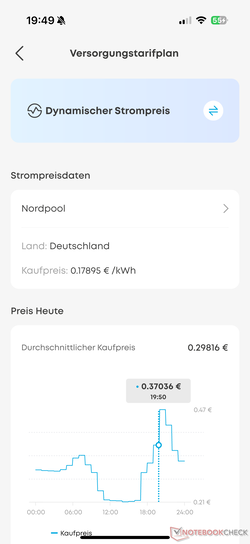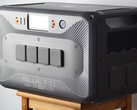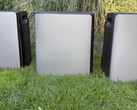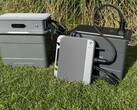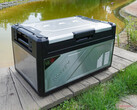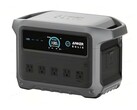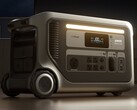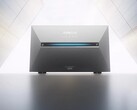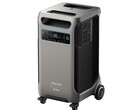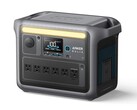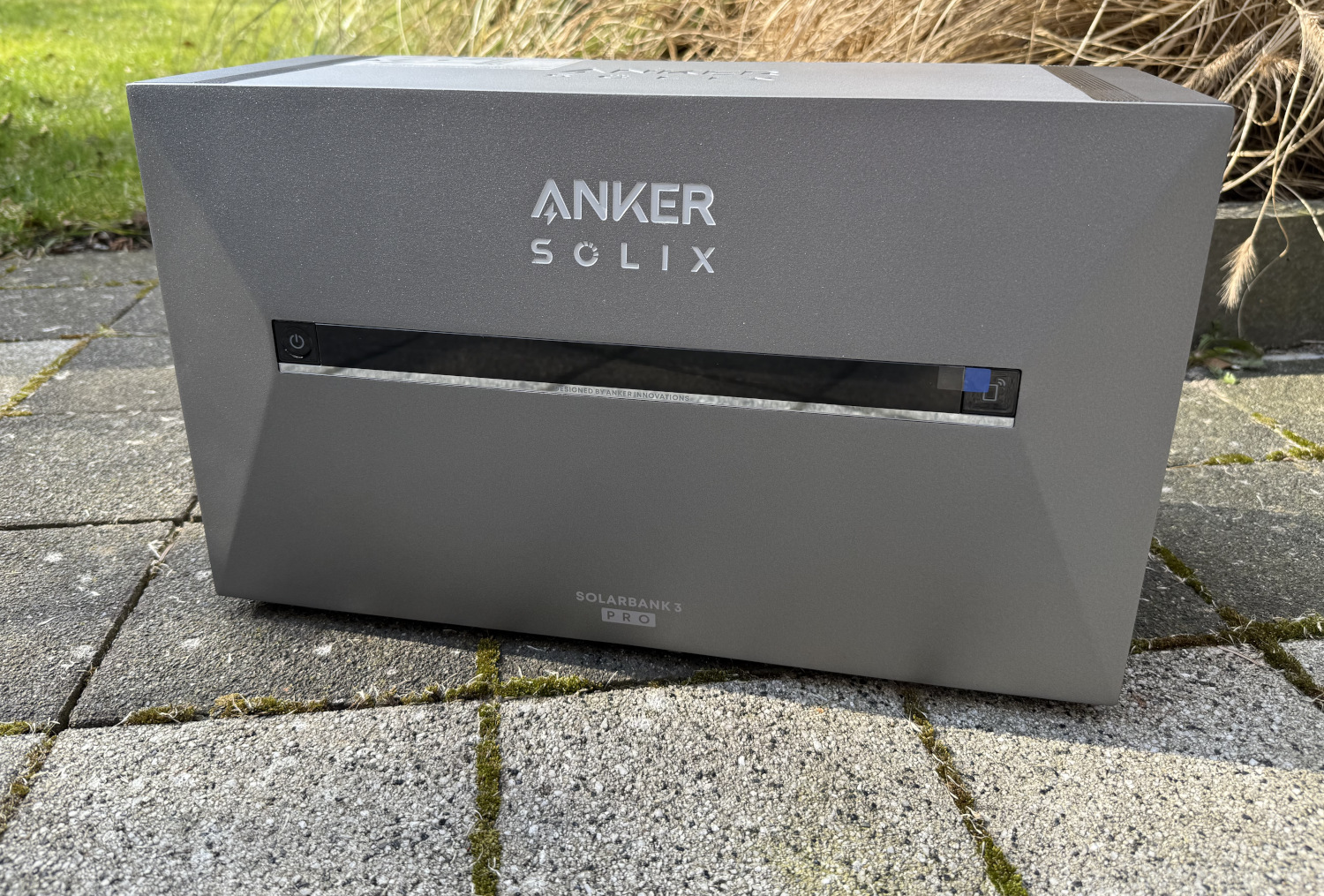
Powerful balcony power station system with AI: Anker Solix Solarbank 3 Pro in practical review
Mega solar power.
The Solix Solarbank 3 Pro is Anker's most powerful balcony power station system to date. It offers 50 % more power and almost 70 % more battery capacity than the Solarbank 2 Pro. Our Anker Solix Solarbank 3 Pro review reveals what this means in practice and how well it works.Marcus Schwarten, 👁 Marcus Schwarten (translated by Florian Schmitt) Published 🇩🇪 🇫🇷 ...
Anker Solix Solarbank 3 Pro verdict: Powerful beyond balcony solar
The Solarbank 3 Pro is the most powerful solution from Anker Solix to date. It is almost oversized for a simple balcony solar power station and impressed us in our test with its extreme performance (sometimes beyond the balcony power station) as well as its simple and reliable function.
It offers some new and interesting features such as AC charging in combination with dynamic electricity tariffs and the new AI optimization, which was not yet available with the Solarbank 2 Pro.
If you are looking for a powerful balcony power plant system that can be expanded later (or immediately) into a mini PV system with up to eight panels and 1,200 W feed-in power, the Anker Solix Solarbank 3 Pro is the right choice. For those who need up to four panels and do not use a dynamic electricity tariff (and do not want to use one in the future), the inexpensive predecessor will still be perfectly adequate in 2025.
Pros
Cons
Price and availability
The recommended retail price for the Anker Solix Solarbank 3 E2700 Pro is 1,499 euros (1,726 US dollars). This is significantly more than at the launch of the Solarbank 2 Pro, but also includes more power.
Table of Contents
- Anker Solix Solarbank 3 Pro verdict: Powerful beyond balcony solar
- Specifications: Solix Solarbank 3 Pro & Solarbank 2 Pro comparison
- Features: More power, more memory and AI
- Installation: Simple as usual, perfect with smart meters
- App: Anker Intelligence to maximize savings
- Impressions: Strong system with few points of criticism
- Efficiency: Almost 90 percent of the energy can be used
- Conclusion on the Anker Solix Solarbank 3 Pro: Powerful, but...
Two years ago anker Solix launched a storage system for balcony power plants for the first time with the first generation of the solar bank. The Anker Solix Solarbank 2 series, which consists of various models, was followed a few weeks ago the launch of the Anker Solix Solarbank 3 E2700 Pro.
The third generation is once again clearly positioned above the Solix Solarbank 2 Pro, which was in our test last year last year. Our Anker Solix Solarbank 3 Pro test reveals what the new generation has to offer in terms of innovations and how well it has performed in practice in recent weeks.
Specifications: Solix Solarbank 3 Pro & Solarbank 2 Pro comparison
Before we get to the actual test report, let's first compare the specifications of the Solarbank 3 Pro with its predecessor Solarbank 2 Pro. This provides an initial overview of the improvements and new features.
| Solix Solarbank 3 E2700 Pro | Solix Solarbank 2 E1600 Pro | |
|---|---|---|
| Capacity | 2,688 Wh | 1,600 Wh |
| expandable | 16 kWh | up to 9.6 kWh |
| Battery type | LiFePO4 | LiFePO4 |
| Number of MPPT | 4 | 4 |
| PV input power | 3,600 W | 2,400 W |
| AC charging power | 1,200 W | n.a. |
| Inverter output power | 800 W | 800 W |
| Output power socket | 1,200 W | 1,000 W |
| Dimensions | 460 × 254 × 279 mm | 460 × 249 × 254 mm |
| Weight | 29.2 kg | 21.8 kg |
| RRP (at launch) | 1,499 euros | 1,199 euros |
Features: More power, more memory and AI
With the Solarbank 3 Pro, Anker Solix has once again sharpened things up considerably. As with the Solarbank 2 Pro four MPPTs are also installed here, but these can now each accept up to 900 W (a total of 3,600 W, i.e. 50 percent more) with at least one additional battery installed (without a total of 1,800 W). This means that two large solar panels can be connected to an MPPT via a Y-cable, which increases the maximum possible number to eight.
The integrated storage system has also been improved. Instead of the previous 1.6 kWh, the third generation now offers almost 2.7 kWh (2,688 Wh to be precise) of battery capacity. The new BP2700 additional battery with 2,688 Wh is also available to match. It is compatible with the old BP1600. Thanks to the integrated heating function, the system can withstand temperatures down to -20°C, which of course requires energy.
What is also the same: the feed into the domestic grid is consumption-controlled via smart meters (from Anker or Shelly 3EM / Pro 3EM). However, up to 1,200 W feed-in power can be set in the app (only after approval, then no longer operable as a balcony power plant).
Another new feature is the option of AC charging, which is interesting in combination with a dynamic electricity tariff. There is also another emergency socket from which up to 1,200 W can be drawn directly - in the event of a power cut, for example.
Installation: Simple as usual, perfect with smart meters
Despite the larger battery capacity and more power, the Solix Solarbank 3 Pro is only a good 2 cm taller (460 × 254 × 279 mm). The size (460 x 233 x 217.5 mm) of the new BP2700 additional battery with 2,688 Wh is even completely identical to the dimensions of the old BP1600 with 1,600 Wh, which can still be combined. This means that the battery capacity can be combined as required.
At almost 30 kg, the weight of the third generation has once again increased significantly. Apart from that, installation is once again as simple as ever. The Solarbank 3 Pro is simply plugged onto the additional batteries (if available) to create a more or less tall tower. The necessary material is included in the scope of delivery.
The existing or supplied solar panels (up to four) are connected directly or via Y-cable (up to eight) to the four MPPT connections of the system. In addition, the 5 m long power cable must be connected to a socket in the household to be supplied. The Anker Solarbank 3 Pro is ready, at least in the simplest installation mode.
If you want to benefit as much as possible from the solar energy you generate yourself, you should buy at least a few Anker Solix Smart Plugs and connect them to the largest consumers in the household. Even better is the installation of the Anker Solix Smart Meter or a compatible model from Shelly (3EM and Pro 3EM, available at amazon.com) in the household junction box, although this requires an electrician. A fully consumption-controlled feed-in is then possible, but of course also incurs additional costs.
App: Anker Intelligence to maximize savings
Once the Anker Solix Solarbank 3 Pro has been physically installed, the next step is to set it up in the app. To do this, you first need to download the Anker app, which is available free of charge for iOS and Android.
Then simply add a new device, select the Solarbank 3 Pro and follow the well-described setup process. This did not cause any problems with the previous generation and also worked without any problems in the Anker Solix Solarbank 3 Pro test.
Then it's a matter of fine-tuning and choosing the right settings. The Solarbank 3 Pro offers the following five operating modes / power consumption scenarios:
- Smart mode: uses Anker Intelligence AI to take future power consumption, power generation and power price fluctuations into account for the best possible energy usage strategy
- Self-consumption: feed-in is dynamically controlled by the smart meter
- User-defined mode: Creation of individual schedules for power output
- Intelligent plug mode: feed-in is dynamically controlled by smart plugs
- Schedule mode: also takes dynamic electricity tariffs into account
There is also the option of "Manual emergency power supply". This switches on the external socket of the Solarbank 3 Pro for a defined period of time so that consumers can be operated directly from the storage system.
Anker Solix promises maximum savings for the new smart mode. This requires an installed smart meter, but goes well beyond the self-consumption mode. The system also takes other factors into account with the help of Anker Intelligence AI.
In addition to the weather forecast and the associated PV production, these include the predicted energy consumption in the household (based on a 24-hour learning phase and empirical values). The app then always displays a value for the additional savings supposedly made by the new AI mode. However, this is not really comprehensible.
Dynamic electricity tariffs (via Nord Pool) can also be taken into account here in order to charge the storage unit at times of low electricity prices and no/little sunshine for later use when energy prices are high.
Unfortunately, two things remain unchanged that many users (and us in the test) find annoying: Firstly, the battery's minimum reserve can still only be set at 5 or 10 percent. Secondly, it is still not possible to log into the Anker app on several devices at the same time.
Impressions: Strong system with few points of criticism
We had the Anker Solix Solarbank 3 Pro in test operation for a few weeks, at times connected to eight panels with around 3,700 W peak power. Under German law, however, it is no longer a balcony power station and requires expert approval and corresponding registration.
Whether this additional effort and cost is worthwhile depends on various factors such as your own energy consumption. Theoretically, the Solarbank 3 Pro can even feed up to 1,200 W into the grid, as this value (for our test device) can be set as the maximum feed-in power into the house via the app. It will be even more exciting when the announced cluster solution with up to four Solarbank 3 Pro with a maximum capacity of 64.5 kWh and a feed-in power of 4.8 kW is implemented.
In this constellation, the system generated around 15 kWh per day in good spring weather, even with the solar panels on a flat roof that were not perfectly aligned in our test installation. Much more would be possible if the storage system was appropriately sized and the system's output was not reduced to 800 W from early afternoon at the latest when the batteries were full.
But even with a maximum solar input of 2,000 W and four panels as a balcony power station, the Solarbank 3 Pro offers plenty of power and can supply a household with most of its own generated solar power when the sun is shining. Even when the sky was overcast, the test usually produced 300 to 800 W of input power, which is at least enough for basic consumption.
However, only the legally prescribed 800 W feed-in power is provided, meaning that the system can only cover a smaller proportion at peak times with high consumption. The response to the values transmitted by the smart meter was accurate to within a few watts and worked within seconds, successfully minimizing the amount of energy drawn from the grid.
As with the second generation, the Solarbank 3 Pro is also modularly expandable. Thanks to the storage upgrade, the head already has 2.6 kWh. Depending on requirements, this can be expanded to almost any size up to 16 kWh with the two compatible additional batteries with 1.6 or 2.6 kWh. This is generally too much for a simple balcony power station.
But then there is another advantage. Just like the Solarbank 2 AC presented last winter, the new Solar Bench 3 Pro can now also be charged via the power grid. Up to 1,200 W can be fed into the battery if required. This is particularly practical in combination with a dynamic electricity tariff.
The storage unit can be charged when electricity is cheap and discharged when electricity prices are high. Unfortunately, Anker has only a cooperation with Nord Pool so far, but this provides a good overview of the dynamic prices.
A practical feature is that Anker Solix Smart Plugs can optionally be activated when the storage system is full and there is a surplus feed into the domestic grid (if not deactivated) in order to use surplus energy to charge an e-bike, for example. However, there is still room for improvement here. It would be great if the data from Anker Solix could be integrated into smart home platforms such as HomeAssistant and the like without any tinkering in order to realize even more possibilities for intelligent energy use.
Another small point of criticism: The test device sometimes emitted a low buzzing noise, but this is not a problem, at least when used outdoors.
Efficiency: Almost 90 percent of the energy can be used
Finally, a few words about the efficiency of the Anker Solix Solarbank 3 Pro. During a continuous discharge process with 400 W, we were able to draw 2,127 Wh from the storage system until the battery reached the set limit of 10 percent (alternatively 5 percent). This results in an efficiency of around 88 percent, which is a solid value. However, this may differ with variable discharge.
During the AC charging process with up to 1,200 W, a total of 2,651 Wh flowed into battery when discharged to 10 percent. This means that around 10 percent was lost during the conversion. This should be taken into account when using variable electricity tariffs, as only around 80 percent of the energy supplied can be withdrawn again (at the power levels used).
Whether the purchase of the Solix Solarbank 3 Pro is financially viable cannot be assessed in general terms, as this depends on various factors such as electricity consumption, electricity costs, location and the number of modules. A solar calculator can help with the assessment. However, as Anker promises a 10-year guarantee and a service life of 15 years or 6,000 charging cycles up to 70 percent, a system should usually pay for itself in a few years. Apart from the fact that the feeling of producing your own electricity is priceless...
Conclusion on the Anker Solix Solarbank 3 Pro: Powerful, but...
Strong, stronger, Solix Solarbank 3 Pro. With the third generation, Anker offers a particularly powerful system that partly exceeds the (German) limits of the balcony solar power station.
If you want a lot, you get a lot. If you simply want to operate a small balcony power station, the second generation is still sufficient.
Transparency
The selection of devices to be reviewed is made by our editorial team. The test sample was given to the author by the manufacturer free of charge for the purposes of review. There was no third-party influence on this review, nor did the manufacturer receive a copy of this review before publication. There was no obligation to publish this review. As an independent media company, Notebookcheck is not subjected to the authority of manufacturers, retailers or publishers.






